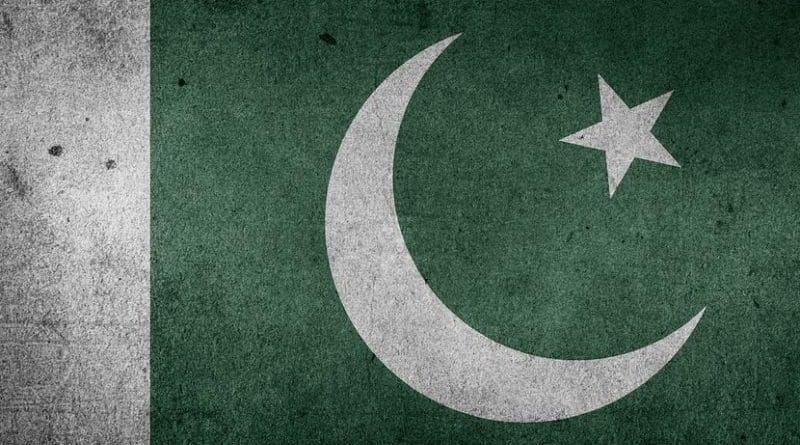Elections Pose Yet Another Challenge To Pakistan – OpEd
By IDN
By Sajjad Ashraf*
Though some legal challenges on constituency delimitation remain, Pakistan is well on its way to a general election. Caretaker Prime Minister Nasir-ul-Mulk took the oath of office at the beginning of June, setting the stage for elections to take place on July 25, 2018.
Punjab province is the main electoral battleground where the Pakistan Muslim League-Nawaz (PML-N) has held power for 30 years, more or less. It is being challenged by Imran Khan’s Pakistan Tehreek-e-Insaaf (PTI). A substantial win in Punjab is necessary for any party to form government at the national level.
Though the campaign may be heated, low voter turnout is a major problem. Turnout reached 55 per cent in 2013, the highest since the 1970 and 1977 elections. But Pakistan remains among the group of countries with the lowest voter turnout globally. Getting people out to vote will be Khan’s big challenge.
For any serious voter in Pakistan, the economy should be the central issue in elections. But this is not the case. Successive governments have left people uneducated and open to being swayed by empty rhetoric.
In a country of more than 200 million people, just 1.3 million pay tax. With external debt around US$100 billion and much of it incurred during the last regime, the immediate question for Pakistan is how to prevent insolvency.
Foreign exchange reserves, largely made up of borrowed money, are sufficient to maintain the country’s imports for only two months. Public-sector enterprises, reportedly stuffed with cronies, have accumulated losses of US$30 billion over the last five years. There is no public debate on this economic nightmare that Pakistan now faces.
Khan, who is doggedly campaigning against corruption, has made the economy a central issue in the run-up to elections. But he faces a dilemma as more and more ‘electable’ politicians who he initially campaigned against now join his party. Thanks to Pakistan’s clan-based politics, Khan needs these ‘electables’ to break the PML-N’s hold over Punjab.
The problem for Khan is that these candidates do not represent a departure from the status quo of Pakistani politics and do not seek to take the country in a new direction. There is no shared vision nor agreed national agenda between Khan and the rest of his party.
Though too early to predict, this election is likely to be much closer than the last. Still, the PML-N has mastered patronage politics over the course of its three decades in power and it will be an uphill battle for PTI to secure the minimum of 140 of the 272 national assembly seats needed to form government at the federal level. If PTI can win these seats there is every chance that this trend will continue for the Punjab assembly, control of which is crucial for stability at the federal level.
Sharif’s criminal conviction for money laundering and possessing properties beyond his known income is likely to further demoralize his former party base. The belligerent posture he and his daughter adopted after the court judgment is not likely to re-energize the party’s electoral prospects. In fact, a considerable number of the PML-N faithful have already defected to PTI over the past month, boosting PTI’s electoral chances.
Sharif’s ranting against the judiciary and the army has left the PML-N confused and internally divided. Many parliamentarians dislike Sharif’s affront on these two institutions and have walked out to join PTI. Among the most senior is former interior minister Chaudhry Nisar who is contesting the election as an independent candidate.
The PLM-N is split between two different narratives — one led by the confrontational Nawaz Sharif and one led by the more accommodating Shahbaz Sharif (Nawaz’s brother), who assumed the party presidency after Nawaz’s disqualification. This split will no doubt cost the PML-N votes.
The once formidable Pakistan People’s Party (PPP) remains confined to the province of Sindh, where it is expected to win a majority of seats both for the national and provincial assembly. The Muttahida Qaumi Movement (MQM), once dominant in Karachi and urban Sindh, is now split and this will likely affect its numbers.
Relations between civilians and the military remain on edge. While there have been instances of military transgression in the civilian domain, it is more the fault of tainted and weak politicians who have ceded space to the army, especially in foreign affairs. With hot borders in both the east and west of Pakistan, this is understandable.
The character of democracy in Pakistan does seem to be changing. Political parties that represent family fiefdoms appear to be part of a weakening trend. But against the backdrop of acrimonious and vendetta politics, it is doubtful whether a peaceful democratic transition will substantially change the existing power dynamics or bring about political stability and maturity in Pakistan.
The untested PTI could be different. But democracy in Pakistan is often limited to winning elections and does not extend to any continued sense of accountability. The political leadership in Pakistan must also operate with an eye at the rear, making it difficult to focus on Pakistan’s myriad of problems. In the absence of strong political parties, the political void will only be filled by non-elected institutions.
The question is whether voters in Pakistan have attained a degree of maturity to vote beyond the clan or narrow interests.
*The author served as an adjunct professor at the Lee Kuan Yew School of Public Policy, National University of Singapore from 2009 to 2017 and is a former member of the Pakistan Foreign Service. This article first appeared in East Asia Forum.

